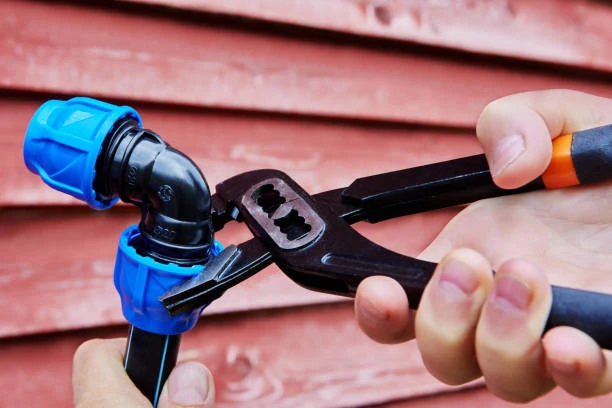The Polyethylene pipes and fittings market is witnessing significant growth as industries and municipalities seek efficient and sustainable solutions for their piping needs. With the increasing demand for durable and versatile materials, polyethylene has emerged as a top choice for various applications, including water supply, sewage, and gas distribution.
Market Overview
The market for polyethylene pipes and fittings is projected to expand steadily in 2024 and beyond. Factors contributing to this growth include urbanization, infrastructure development, and the rising need for reliable water management systems. As economies recover from recent disruptions, investment in construction and infrastructure will surge, further boosting the demand for polyethylene products.

Key Drivers of Growth
- Urbanization: Rapid urbanization across the globe creates a pressing need for efficient water and sewage management systems. Polyethylene pipes, known for their lightweight and corrosion-resistant properties, are increasingly being adopted in urban infrastructure projects.
- Sustainability: With an increased focus on sustainable practices, polyethylene pipes offer eco-friendly solutions. They are recyclable and have a longer lifespan than traditional materials, making them an attractive option for environmentally conscious projects.
- Technological Advancements: Innovations in manufacturing processes have improved the quality and performance of polyethylene pipes and fittings. Enhanced durability and resistance to extreme weather conditions make them suitable for a wide range of applications.
- Cost-Effectiveness: Polyethylene pipes are generally more affordable than other piping materials. Their lightweight nature reduces transportation and installation costs, making them a cost-effective solution for various projects.
Applications of Polyethylene Pipes and Fittings
The versatility of polyethylene pipes and fittings allows for their use in multiple sectors:
- Water Supply: Polyethylene pipes are widely used for potable water supply due to their resistance to corrosion and scale buildup. They ensure clean and safe drinking water delivery.
- Sewage and Drainage: Their flexibility and strength make polyethylene pipes ideal for sewage and drainage systems. They can withstand high pressure and are resistant to chemical substances.
- Gas Distribution: The market for polyethylene gas pipes is expanding as they provide a safe and efficient means of distributing natural gas. Their resistance to environmental stress cracking enhances safety.
- Agriculture: In agricultural applications, polyethylene pipes facilitate efficient irrigation systems. Their durability and adaptability ensure optimal water distribution for crop cultivation.
Regional Insights
The demand for polyethylene pipes and fittings varies across regions, influenced by factors such as population growth, infrastructure investment, and environmental regulations.
- North America: The North American market will witness substantial growth due to ongoing infrastructure projects and a shift towards sustainable materials. The construction sector is a significant driver, with increased spending on residential and commercial buildings.
- Europe: In Europe, stringent environmental regulations and a push for sustainability are propelling the adoption of polyethylene pipes. The region is focusing on upgrading existing infrastructure to meet modern standards.
- Asia-Pacific: The Asia-Pacific region is experiencing rapid urbanization, leading to increased demand for polyethylene pipes. Countries like China and India are investing heavily in infrastructure development, driving market growth.
Challenges in the Market
Despite the positive outlook, the polyethylene pipes and fittings market faces several challenges:
- Raw Material Price Fluctuations: The price of polyethylene is subject to fluctuations based on crude oil prices and global supply-demand dynamics. This volatility can impact production costs and pricing strategies.
- Competition from Alternative Materials: Other materials, such as PVC and metal, pose competition to polyethylene. Manufacturers should invest in research and development to enhance product performance and address emerging market needs.
- Regulatory Compliance: Adhering to industry standards and regulations can be challenging for manufacturers. Compliance with safety and environmental regulations is essential for market entry and sustained growth.
Future Outlook
Looking ahead to 2024 and beyond, the polyethylene pipes and fittings market will continue to expand. The increasing emphasis on sustainable practices, coupled with technological advancements, will likely drive innovation in the sector. Manufacturers should invest in research and development to enhance product performance and address emerging market needs.
Conclusion
The polyethylene pipes and fittings market is on an upward trajectory, driven by urbanization, sustainability, and technological advancements. As industries seek reliable and eco-friendly piping solutions, polyethylene products will play a crucial role in shaping the future of infrastructure and water management systems.
FAQs
- What are polyethylene pipes used for?
People use polyethylene pipes for water supply, sewage systems, gas distribution, and agricultural irrigation. - What are the advantages of polyethylene pipes?
They are lightweight, corrosion-resistant, cost-effective, and have a long lifespan. - Are polyethylene pipes recyclable?
Yes, polyethylene pipes are recyclable, making them an environmentally friendly choice. - How do polyethylene pipes compare to PVC?
Polyethylene pipes are more flexible and resistant to impact and environmental stress than PVC. - What is the expected growth rate of the polyethylene pipes market?
The market is projected to experience steady growth, with increasing demand in various sectors through 2026 and beyond.


















